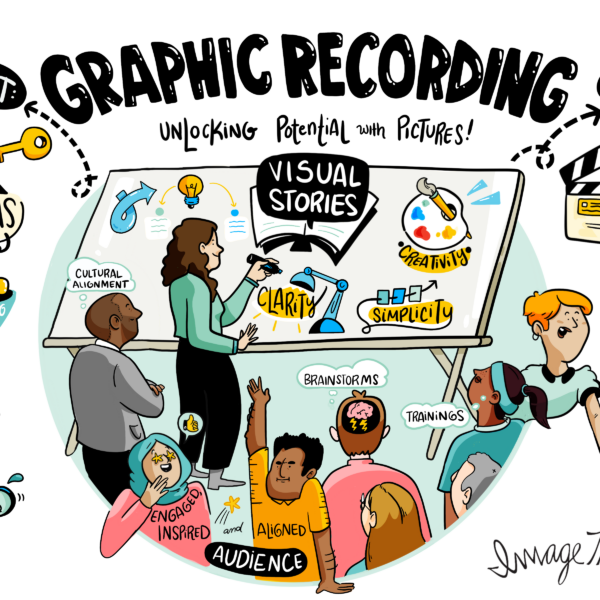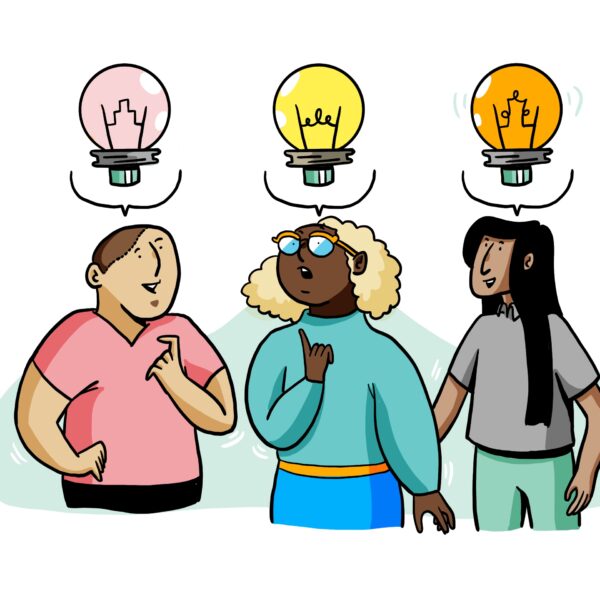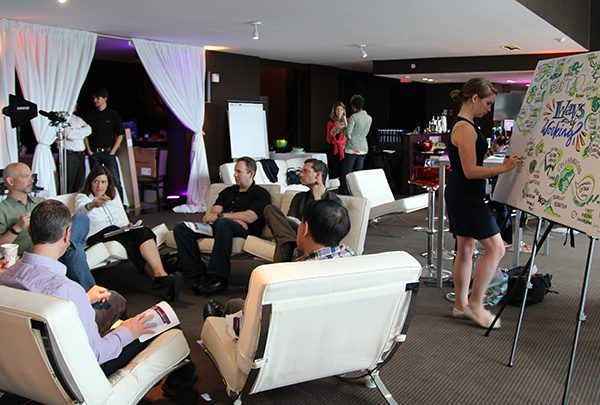Why Brainstorming in Groups Matters
When teams come together to brainstorm, they’re not just listing new ideas. They’re building momentum, sparking creative thinking, and creating shared ownership of solutions.
But traditional group brainstorming techniques often fall short. Sticky notes fall off the wall, voices get lost, and the energy fizzles. Too often, brainstorms end without clear outcomes or follow-through.
That’s why, in the ImageThink Method™, brainstorming isn’t left to chance. It’s structured into the Scan Phase—a deliberate process for surfacing diverse perspectives and expanding creative possibilities.
Watch Nora introduce the Scan Phase to see how ImageThink builds brainstorming into the foundation of strategic visual leadership.
Adding a Visual Twist to Brainstorming
At ImageThink, we use visuals not as decoration but as a strategic tool. Our visual strategists integrate illustrations, frameworks, and symbols into the very structure of a brainstorming session.
When ideas are captured visually, participants see the conversation unfold in real time. This makes it easier to connect dots, build on each other’s thinking, and ensure that ideas flow freely instead of disappearing into thin air.
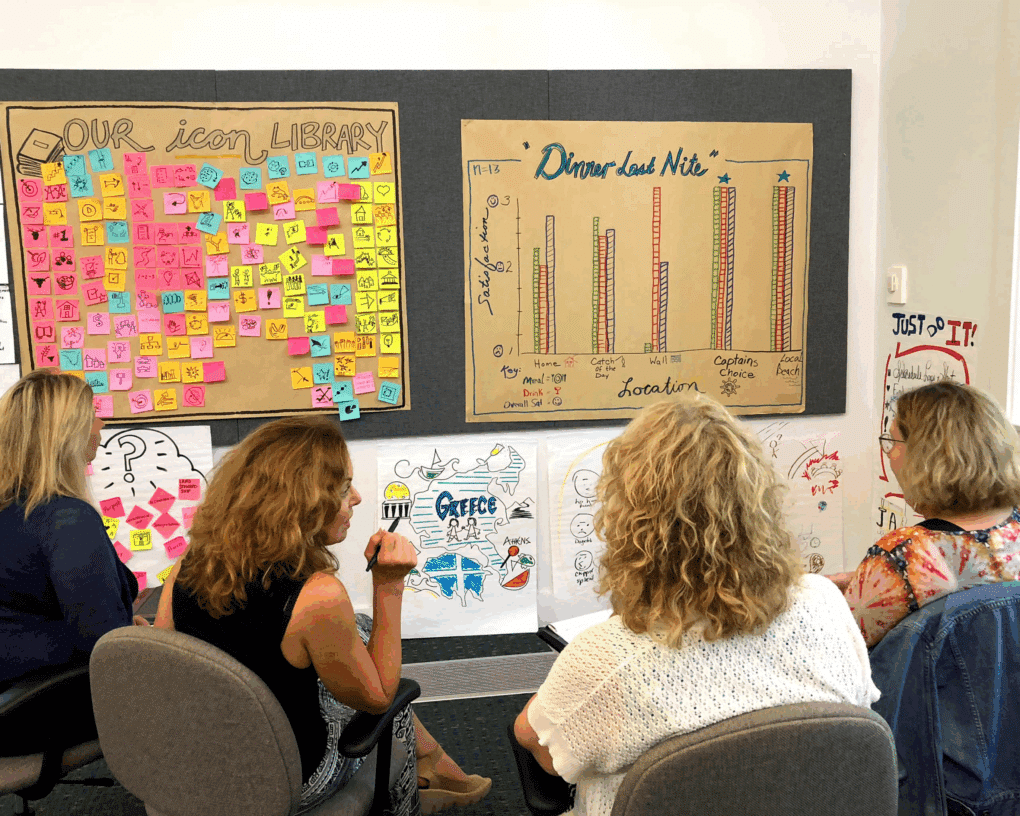
Benefits of Visual Brainstorming in Groups
Integrating visuals into group brainstorming has lasting impact:
- Clarity: Abstract concepts become tangible, easier to discuss and refine.
- Inclusion: Every participant’s voice is captured, not just the loudest.
- Retention: Teams remember imagery longer than text, so brainstorming ideas stick.
- Action: Visual artifacts turn brainstorms into roadmaps teams can use to develop ideas into initiatives.

Turn Your Next Meeting Into a Creative Breakthrough
How Visual Frameworks Guide Group Brainstorming
The framework you use to guide a brainstorming session shapes its outcomes.
At ImageThink, we design visual frameworks that structure conversations and channel energy. Some examples:
- Radial Mind Maps: Place a challenge at the center, radiate ideas outward, and encourage divergent thinking. This format helps generate creative ideas broadly, then reveals clusters and themes for prioritization.
- Journey Maps: Plot the steps of a customer, patient, or employee journey to uncover friction points and opportunities.
- Grids and Matrices: Sort brainstorming ideas by impact, urgency, or effort to quickly move from generation to decision.
Watch Nora explain what makes a successful brainstorm and how visuals transform unstructured conversation into actionable outcomes.
In this short video, Nora shares the key ingredients that make brainstorming in groups effective—and how visuals amplify collaboration, inclusion, and clarity.
Why ImageThink Facilitators Are Different
Most facilitators record what’s said. ImageThink facilitators do more—we design the structure of the conversation itself.
By weaving visuals through every stage of a brainstorming session, we:
- Frame the challenge with custom visual templates.
- Capture contributions as real-time illustrations.
- Facilitate dialogue around shared visual anchors.
- Deliver visual artifacts teams can circulate and act on.
This layered approach turns group brainstorming from a meeting into a strategic accelerator.
Real-World Example: The CancerCare Hackathon
When CancerCare and Guidemark Health wanted to identify new solutions for prostate cancer patients, they turned to ImageThink to design and facilitate a one-day hackathon.
The challenge: Align 40 participants—patient advocates, researchers, journalists, and pharmaceutical experts—around a complex problem set that could easily take weeks.
Our team used a custom visual framework to guide cycles of divergent and convergent thinking. Radial maps helped participants explore widely, then cluster insights into themes. By the end of the session, they had moved from scattered ideas to prioritized, actionable solutions.
The result? CancerCare left with innovations they could pursue immediately—and a clear, visual record to share with stakeholders. Case study link: https://www.imagethink.net/work/cancercare-hackathon/
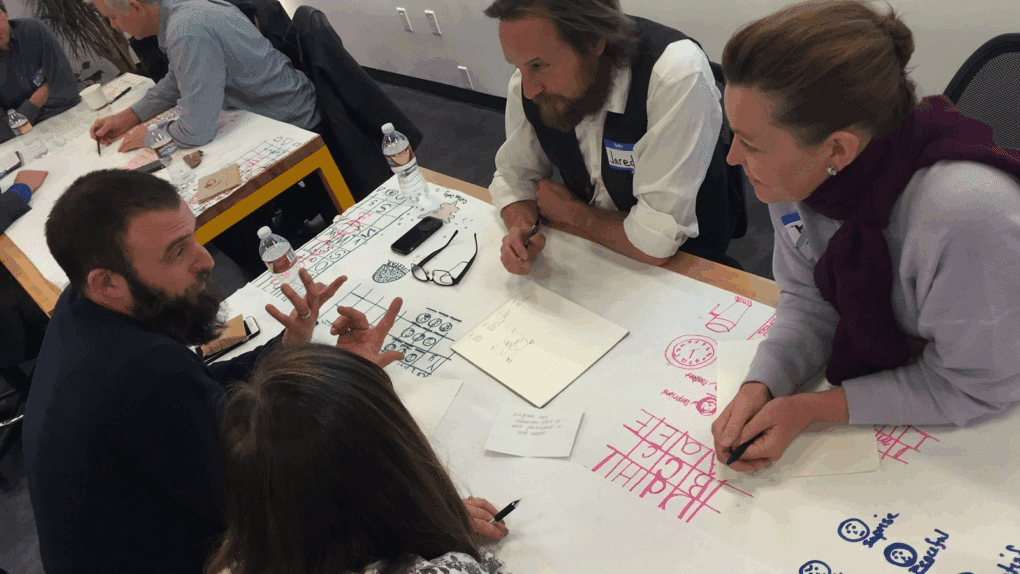
Overcoming Common Challenges
Visual facilitation solves many of the most common obstacles in brainstorming in groups:
- Dominant voices: Real-time visuals ensure every idea is captured.
- Idea overload: Frameworks organize inputs into categories and priorities.
- Lack of follow-through: Visual artifacts serve as a living record, keeping momentum alive.
- Online brainstorming challenges: Shared digital canvases prevent disengagement and make collaboration dynamic.
Elevating Group Brainstorming With Visuals
Group brainstorming is most powerful when participants can see their ideas take shape together.
By adding a visual twist, teams don’t just generate more creative ideas—they align faster, remember more, and leave with a shared vision they can act on.
At ImageThink, this is the power of The ImageThink Method™: weaving visuals into the heart of a brainstorm to transform conversations into clarity and strategy. When you can picture the future together, you can build it together.
